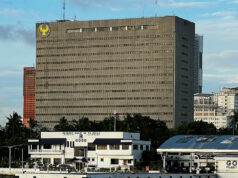Rural banks adequately capitalized for pandemic shock — BSP
RURAL banks are sufficiently capitalized to weather the economic crisis triggered by the pandemic, Bangko Sentral ng Pilipinas (BSP) Governor Benjamin E. Diokno said.
Mr. Diokno said stress tests and simulations suggest that the rural banking industry can withstand scenarios where they have to write off three months’ worth of interest income on all loans and all fees and commissions.
“This is expected as banks recording high pre-shock capital adequacy ratios. This enabled rural and cooperative banks to yield above-10% minimum capital adequacy ratios after the simulation,” Mr. Diokno said in an online briefing Thursday.
Mr. Diokno also said other scenarios that assumed a 5% to 20% reduction in net interest income over the three months of quarantine left them with healthy capital adequacy metrics.
“The results of this test show that post-shock, capital adequacy ratio of the rural and operative dynamics remain comfortably above 15% over the first, second and third month periods of the quarantine even under a 20% reduction in net interest income,” he said.
As a group, rural and cooperative banks have a capital adequacy ratio of 19.79%, well above the 10% regulatory minimum.
The gross non-performing loan ratio of the rural and cooperative banking industry was at 11.21% at the end of March, down from the year-earlier 11.65%.
The central bank has implemented regulatory relief measures for banks, including the classification of loans to small businesses as reserves, to help them comply with reserve standards while ensuring funding for businesses remains available.
The BSP said smaller lenders have been availing of such relief measures, with 66 rural and cooperative banks lending P1.5 billion as of the week ending July 23, compared to the P1 billion by 39 banks during the week ending April 30.
Meanwhile, 10 rural and cooperative banks registered P100 million worth of loans to large enterprises as reserve compliance.
“Preliminary data show that rural and cooperative banks were at 674 as of December 2009 and are now down to 444 as of end-July 2020,” he said, noting smaller lenders were either closed or absorbed by healthier banks. The industry contraction reflects a process of consolidation encouraged by the BSP. — Luz Wendy T. Noble



